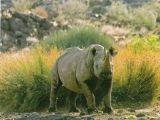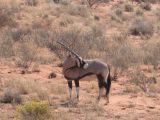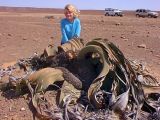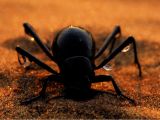In the local Nama language, "Namib" means vast. Vastness, besides its age (20 million years), and the amount of precipitations (50 ml per year) define the Namib Desert (southwestern Africa). It stretches on a land stripe about 1,930 km (1,200 mi) long and 100-160 km (60-100 mi) wide, representing the coastal plain of Namibia and being one of the most arid and barren deserts on Earth. Several years can pass without a single rain droplet, with ground temperatures reaching 65 ?C during summer.
The northern tip of the desert, called Skeletons Coast, is located in Angola. The area got this name because of the frequent wrecks in the cold and deceiving waters of the nearby Atlantic. At least 50 days annually, a large part of the coastal area is enshrined in a dense milky fog, produced by the vapors on the surface of the ocean coming in contact with the cold waters of the Benguela Current.
Most of the wrecks are fishing boats. The survivors face a cruel faith in this zone of death: hundreds of kilometers of desert, without the slightest chance of finding water.
Many whales strand in this area as well. A whale carcass can provide the meal for a family of local lions for weeks. Namib coast is also the place where fur seal colonies are found. In fact, the fur seal colonies and the stranded sea mammals attract other predators too, like black-backed jackals (Canis mesomelas) and brown hyenas (Parahyaena brunnea).
In the northern part of the desert, the landscape is dominated by ashy dunes with dark brown edges, while the southern desert is flat and stony. Sand storms are common. The sand of Namib varies from yellow to orange and ocher, due to the richness in iron oxides. The dunes of Sossusvlei are the tallest in the world: 300 m (1,000 ft).
The Namib-Naukluft National Park is the largest in Namibia, with a surface of 49,768 square km (19,000 square mi), and the fourth in the world. The park comprises, besides desert, high plateaus and mountains (Naukluft are the nearby mountains).
The Namib desert seems devoid of life during the daytime, but it turns alive during the night. In the mourning, you can see long-footed Namib Desert beetles (Stenocara gracilipes) collecting droplets of dew, the water they will use for 24 hours.
But Namib is not inhabited just by small creatures; there are Namib Desert elephants, giraffes, gemsbok antelopes (the symbol of Namibia), Hartmann mountain zebras and lions. All the animals in Namib can spend days without drinking water.
But Namib's most interesting creature is not an animal, but a plant. A plant that seems to be born from the imagination of the science fiction movie makers.
Welwitschia mirabilis is just a snag, but a gymnosperm, like all coniferous trees. Despite producing just two leaves, each one can be up to 4 m (12 ft) long. The plant is fast disappearing. It is a living fossil, from the time when Earth was covered just by ferns and gymnosperms during the Jurassic era.
The enormous green fronds (leaves) coil out and around each other like diseased dragons' tongues, forming a mass of cactus-like projections, ending in a sunbleached gray frizzling. The whole plant can be 13 ft (4 m) wide and 5ft (1.5 m) tall, with roots going down another 6ft (1.8 m). Female red-crimson cones or male white cones grow in clusters in the middle of Welwitschia and the individuals are males or females (the plant is dioecious).
The plant's weapon against potential interested herbivorous is its poison, which however cannot deter the black rhino. The poisonous labyrinth of leaves forms the habitat for a weevil species, Odontopus sexpunctatus, totally dependent on the plant and ensuring its pollination. The weevil's larvae are red; the adults are tawny with black spots.
But the most astonishing trait of Welwitschia is its longevity: it can overcome 2,000 years, being one of the most long-lived organisms on Earth: when Christianity arose many of the biggest Welwitschia were kicking around in Namibia.
The name of 'Welwitschia' is given in honor of an Austrian explorer, Friedrich Welwitsch, who first spotted the plant in 1859, while 'mirabilis' points to the plant's unique traits. It does share a kinship with two gymnosperm families, one being that of the joint-pine, but remotely.
Scientists believe Welwitschia resisted from Jurassic until now because, in the harsh settings of Namib, it did not experience competition with the evolved flower plants.
Gymnosperms are generally resistant to drought, but Welwitschia's secret is linked to the fogs that constantly wrap the region. The cold water of the Benguela sea current on Namib coasts hit the desert's hot and dry air producing vast, soggy, low level clouds. The hideous, sinister leaves serve exactly for this: sucking the dew left by the fog.
Other bushes found in the Namib are represented by Aloe, Euphorbia, desert rose (Adenium obesum) and Acacia.
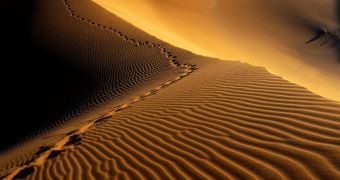
 14 DAY TRIAL //
14 DAY TRIAL // 
